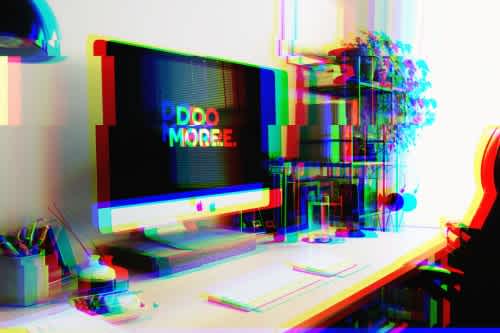Working remotely is not a new concept. Digital nomads managed to have it all figured out for at least half a decade now. The ability to work remotely has been offered by many companies, even before the world was suddenly forced indoors, regardless of geographical location or timezone.
So how do you set up your workspace as a remote developer?
Here are a few things to help you get started.
Time tracking tool
It’s a bit different when you’re physically somewhere else. When you hit the office, your regular 9 to 5 becomes marked by where you are.
But things can quickly get out of hand when you’re working remotely from home. You don’t have that space-based demarcation between work and life separation.
It’s very easy to think that you can just work and do other things around the house on the side.
The next thing you know, you’ve actually spent thirty minutes here and there until your entire day trickles away. Suddenly, you��’re left with uncompleted tickets and tasks.
This is where a time tracking tool comes in handy.
For me, as a remote freelance developer, I charge my projects on a fixed rate to give clients a sense of certainty for their budgets. However, if I take too long to create something, my hourly rate essentially goes down. If I want to keep my working rates at a particular level, I need the data about my working hours against the fixed rate of the project.
I tend to avoid hourly rates because I’m all for efficiency. If I go over time because I’m distracted by a toddler, my clients don’t get penalised for it.
You can just look for them in the app or play store, have it on your phone or browser plugin.
Whatever the app, it’s important that you have one. For me, it prevents me from negotiating and disputing the amount of actual work done. When I have an actual clock that tells me exactly how much time I’ve spent working vs. what I’ve convinced myself that must do around the house, there are no blips in my brain to tell me otherwise.
Time management discipline
It’s one thing to track your time, it’s another to keep on top of your time management game.
The one thing I found interesting when I started working remotely is the number of correspondences increased significantly, despite being the same work I was doing in the office.
The difference between office work and remote work is that your colleagues have the potential to direct communication with you right away. They can clarify things quickly and then move on.
However, things are a bit different when you suddenly find yourself in a group chat or a long chain of emails. The written form can take up more time than the time it takes for you to get back into the flow state after an interruption.
This is why you need to be hard on your time management discipline and clearly block out your time for the task type.
For me, I block my time ruthlessly and set specific timeslots in the day for emails, client replies, and batch the types of projects I do so that I maximize each output.
Your physical and digital workspace
Having a proper workspace is important if you’re transitioning over to remote work.
Sure, there’s always the coffee or dining table — but if you’re planning to do this long term, you’re going to need a proper physical workspace the works for you and those that live with you.
I made this mistake early in my work-from-home career.
The dining table was great at first, until I started to get back pain from the incorrect height of the chair. It didn’t take me long to notice how hard the seat is until I’ve been sitting on it for a few hours.
You don’t really need an entire room to yourself either. It may sound great but as developers, we’re generally content with just a quiet space - along with a proper desk, chair, keyboard, and monitor set-up.
Ergonomics is a thing for a reason. Save your wrists from carpal tunnel, tennis elbow, and things like mouse shoulders and computer back.
Physical injuries due to long term posture caused by the way you sit can impact on your ability to work effectively. Popping some pills won’t help you elevate the pain these injuries can cause — but having a good workstation set-up can make a major difference.
So before you set up permanently in your living room, assess your current set-up and see what you can do to improve it at an ergonomic level.
Your digital workspace dictates a different kind of productivity when it comes to working remotely.
Personally, I separate my digital workspace not three categories — general communications, project communications, and the projects. Breaking up the communication spaces lets me prioritize which inbox to look at based on current capacity and urgency.
Final thoughts
Working remotely is not hard. In the grand scheme of things, you just need a decent internet connection and a device that will aid you in the act of working.
However, it’s the other stuff on the side that can make or break your ability to work remotely in an effective and efficient manner.
Time track and management were major factors for me in the transition into remote work — something that I’ve been doing since 2018.
Having a decent desk that’s not the dining table came a little bit later when I had to constantly dismantle my workspace every time we needed to eat properly as a family.
Investing in a proper desk, chair and professional space in your home can also help you get into your work mode easier and faster. This is because there’s a clear mental line between home and work — and the two spaces should not overlap for this reason.
When work blends into your home life, things can become chaotic, leaving you feeling as if you’ve been working more than you actually are, or take you down the opposite road of feeling like you haven’t done enough.
So keep your boundaries clean and clear, keep track of your time and you’re on your way towards mastering the art of working remotely from home.


